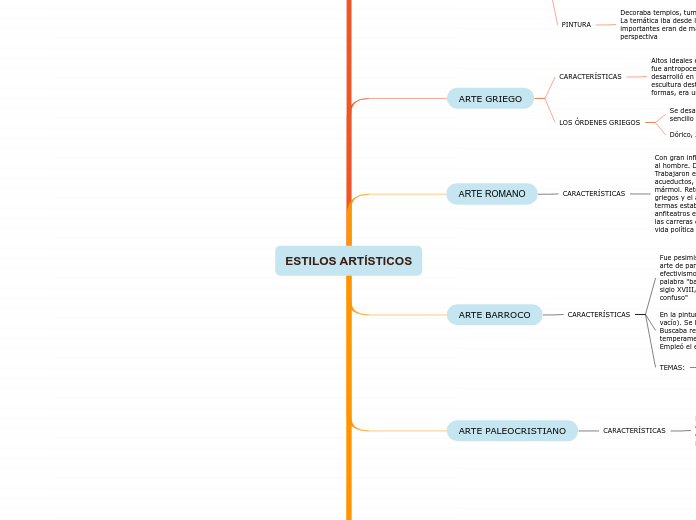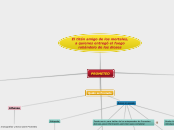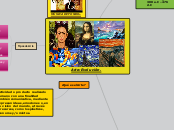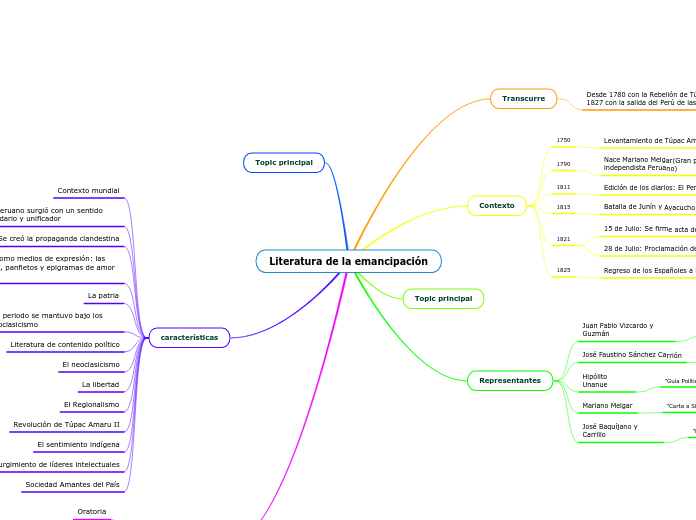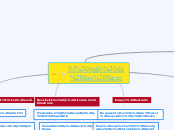ESTILOS ARTÍSTICOS
To name your story, you have to think about the overall message and what you want your audience to understand from the story. Also, make it relevant and easy to remember.
FUENTES DE INFORMACIÓN:
https://laevolución.org.arte
ROMANTICISMO -PERSPECTIVA INDIVIDUAL DEL MUNDO-
Surge a finales del siglo XVIII y hasta mediados del siglo XIX. Se oponía al clasicismo. Surge en Italia, Alemania e Inglaterra. Toma fuerza en Francia y de ahí se extiende a otros puntos de Europa y América. Se asocia a la ternura, pasión, sensibilidad. Se oponía al clasicismo griego. Retomó lo medieval. VALORABAN LA LIBERTAD DE CREACIÓN, retomaban el amor platónico y el individualismo
NEOCLASICISMO O NUEVO CLASICISMO. ALGUNOS LO CONSIDERAN UNA CARA DEL ROMANTICISMO
Surgió en Europa alrededor de 1750 hasta mediados del siglo XIX. Objetivo: rescatar los valores estéticos de Grecia y Roma (Incluidos la mitología y valores de las culturas clásicas) Se oponía al barroco y al rococó. Buscaba la simpleza y el equilibrio de las formas, la armonía y la belleza estética. En la pintura usaban colores fríos y perspectiva; en la literatura usaron la síntesis, claridad y perfección gramatical; en la escultura vuelven al blanco que utilizaban los griegos.
ARTE BIZANTINO
Se fundamenta en el arte griego y paleocristiano, en los templos se utilizó la cruz griega, los murales y mosaicos se utilizaron para decorar. La figura humana es solemne o hierática.
El arte fue un reflejo de la ostentación y solemnidad que rodeó a los emperadores y se convirtió en símbolo del poder político y religioso. La arquitectura en el periodo Justiniano se utilizó para impresionar a los pueblos. La ARQUITECTURA ERA MUY COSTOSA. Antes de Justiniano la basílica seguía la estructura paleocristiana, luego surge la iglesia de planta central, abovedadas, nave para el coro y el deambulatorio para los fieles
SEGUNDA EDAD DE ORO
Los turcos toman Constantinopla
PRIMERA EDAD DE ORO BIZANTINA
Los cruzados destruyen Constantinopla
PROTOBIZANTINO
Surge la querella inconoclasta [iconoclastas vs iconódulos (devotos de las imágenes) (527-726) fue una crisis artística en el arte figurativo
ARTE PALEOCRISTIANO
Manifestaciones figurativas y simbólicas realizadas en el imperio romano en el siglo II d.C hasta el 476 con las hordas bárbaras. Destaca el relieve, signos para iniciados: pez, vid, delfín, cruz, crismón, etc.
SEGUNDA ETAPA
Nace la arquitectura cristiana: basílicas, baptisterios y mausoleos
Nace fuera de la ley para mantener y transmitir la fe. Y acentúa la espiritualidad e igualdad de todos ante Dios. Se manifiesta en las construcciones patricias (centros de reunión de los primeros cristianos)
ETAPA PRIMITIVA
Fue clandestina y de escaso desarrollo. Duró hasta el edicto de Milán -fue cuando se reconoció la legalidad de la religión cristiana-
ARTE BARROCO
TEMAS:
Historia, mitología, religión, fugacidad del tiempo, desencanto, costumbres, vida cotidiana
En la pintura destaca el HORROR VACUI (Horror al vacío). Se buscaba el dinamismo y la tensión. Buscaba representar las pasiones y el temperamento. Utilizó el contraste y el claro oscuro. Empleó el efecto de inconexión y obra incompleta.
Fue pesimista, crítico y complejo. Se le considera el arte de parecer. Es rebuscado. Buscaba el efectivismo, espectacularidad, emocionalidad. La palabra "barroco" se utilizó por primera vez en el siglo XVIII, barroco se puede entender como "arte confuso"
ARTE ROMANO
Con gran influencia etrusca y de los griegos. Exaltó al hombre. Desarrollaron el arte y la bóveda. Trabajaron el busto en relieve. Desarrollaron acueductos, coliseos y circos. Usaron bloques de mármol. Retomaron la columna y el dintel de los griegos y el arco y la bóveda de los etruscos. Las termas estaban destinadas para las clases altas, los anfiteatros eran para los combates, los circos para las carreras de coches y los foros para la actividad y vida política
La mitología fue muy importante (neoático) y el período helenístico la pintura fue rural, marina y de paisajes.
ARTE GRIEGO
The ending of a story is essential. We all know that if the ending is weak, what happened before loses its importance. So make it unpredictable, but fair. A resolved ending answers all the questions and ties up any loose threads from the plot.
LOS ÓRDENES GRIEGOS
This is the closure section of the story.
See examples of possible outcomes below:
- all problems have been solved
- it's clear how each one of your characters ends up
- your main character is transformed by the challenge
Dórico, Jónico, corintio
Se desarrollaron los siguientes órdenes (del más sencillo al más complejo)
Try answering these questions to come up with a closure:
- Have all the problems been solved?
- Is there a clear picture of what happens with each character in the story?
- Has the challenge transformed your main character?
- How do the characters feel in the end?
This is the moment when the main character surpasses the last obstacle and finally faces their greatest challenge.
The climax usually follows one of these patterns:
- realization
- resolution
- choice
Type in your answer.
Altos ideales estéticos, destaca la proporcionalidad equilibrio, fue antropocentrista, florece en los siglos IV y V a.C. Se desarrolló en los siglos VII y II antes de Cristo. En la escultura destacan los cuerpos trabajados, sinuosidad de las formas, era un arte decorativo
ARTE EGIPCIO
The middle of the story is where you add layers of complications that will lead to the end. Reveal more about the character's journey. Did their personality go through changes? How did they overcome the challenges? And as you build up the story’s central conflict, make it more personal to that character. Also, from the middle act, you have to lead into the final act.
PINTURA
There wouldn't be any tension and excitement in your story if there weren't any obstacles in your character's way.
Decoraba templos, tumbas y papiros. Diluían los pigmentos en agua. La temática iba desde lo religioso hasta lo cotidiano. Los personajes importantes eran de mayor tamaño. Pintaban figuras de perfil y sin perspectiva
A story is nothing more than a character overcoming a series of difficulties to reach the desired goal. Obstacles usually create suspense and conflict. In overcoming obstacles, there is growth: weak becomes strong; hatred turns into love; sadness into happiness; wrong into right; lies into truth; or evil becomes good.
See a few examples below:
- stopping a meteor
- finding a killer
- finding love
ARQUITECTURA
Your character(s) need(s) motivation in order to solve the challenge(s).
ESCULTURA
Secondary characters might also have motives that lead them to cross paths with the main character or which might trigger them to help the main character.
Figurillas que representaban la vida cotidiana
Figuras rígidas y estáticas
CARACTERÍSTCAS
Why does your character need to confront this challenge? What does he/she expect to accomplish by solving it?
See a few examples:
- will marry in 3 days
- can fix the mistakes of the past
Colosal. Utilizaron la columna, dinteles, predominan las líneas rectas sobre las curvas. Destacan las tumbas y los templos
GENERALIDADES
Each story has a main character and that character usually needs to solve a problem or challenge. The character's challenge is the one that creates tension throughout the story.
Tiende a ser gigante. Se conoce por las extendidas creencias religiosas, sus construcciones funerarias y templos. hacían pintura y escultura en relieve
In most stories, there are 3 challenges. The number 3 is a mystical number symbolizing completeness. Try to come up with interesting challenges with which your character needs to struggle.
See a few examples below:
- turns into a werewolf at night
- is sent back in time
ARTE RUPESTRE
In the beginning of the story (or the exposition), you will need to introduce the setting and characters. You might also want to introduce the main conflict. This part of the story is important because it gives the reader necessary background information and maybe even a first insight into a character’s personality.
MEGALÍTICO (MONUMENTOS DE PIEDRAS GRANDES Y LABRADAS)
The setting (time & place) of a story can change throughout the plot.
CRÓMLECH
Sensory details include sight, sound, touch, smell, and taste. These details are important because they create depth in your setting.
See a few examples below:
- the smell of fresh bread
- the scent of freshly cut grass
- rain falling onto the windshield etc.
Formado por varios dólmenes y menhires
DOLMEN
The time of the story can also change. It can describe the event of a single day or can include an entire year's plot. Anyway, don't forget to mention it.
Sobre los dolmen descansan otras grandes piedras
Un dolmen se forma por varios Menhires
MENHIR
Your story can take place wherever your imagination will take you to.
For example: in an elevator, in an enchanted forest, etc. Don't forget to give details of the environment each time the setting changes, otherwise, the story can be confusing. Also, mention the seasons as each of them has unique weather and events.
Location
Gran piedra clavada
MOBILIARIO
Characters are essential to a good story. Usually, the protagonist(s) is/are the most affected by the plot. Introduce a character by focusing on their actions, interests, and occupation, as the physical appearance doesn't make a difference in most cases.
CARACTERÍSTICAS
Type in the name of your character.
Se destacan las pinturas de Las cuevas de Altamira y Lascaux, Francia.
Add other qualities/attributes of the character.
estatuas antropomórficas y zoomórficas talladas en arcilla y piedra
What is your character's main goal?
fight Evilfind lovedefeat his/her enemyrule the worldmake friendstime travelmake an awesome discoveryOther
También se le conoce como arte mueble
Which traits best describe the character's personality? Choose more if necessary:
introvertedloyalkindindependentquick-thinkingadventuresomeidealisticsweet-naturedcalmrisk-takercreativewittystrictfussyweirdclumsyharshaggressivecarelessclingingcowardlycrueldeceitfulimpulsiveOther
son los primeros vestigios de que se tiene registro
Choose the type of your chacter:
Protagonist (main character)Antagonist (main character's opponent)Flat (stereotypical character)Round (his/ her personality develops throughout the story)Static (doesn't evolve as a person throughout the story)Dynamic (dramatical change in personality)Confidant (the main character trusts him/ her)Foil (contrasting character who enhances the personality of another character)Other
